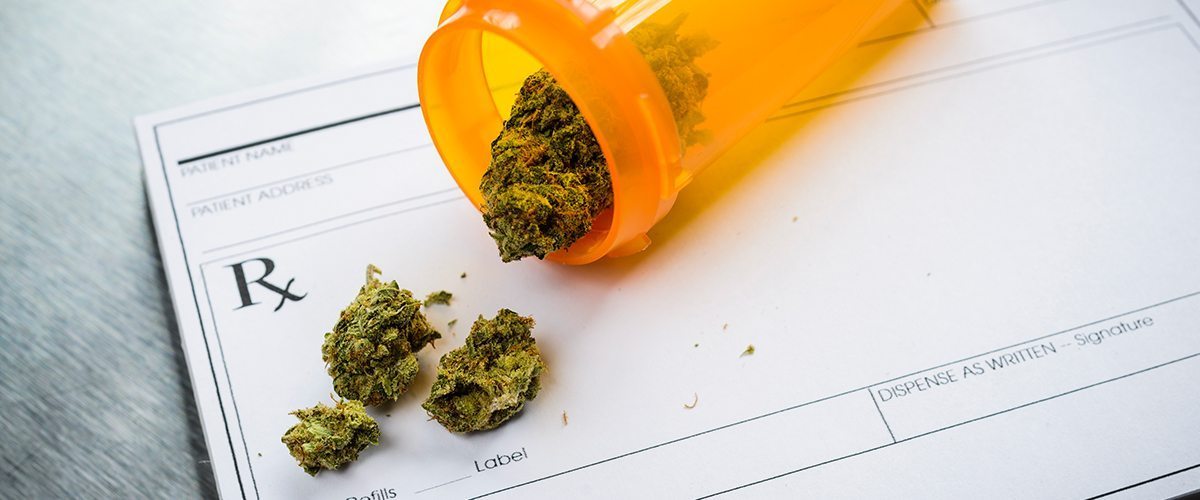The findings suggest that medical marijuana patients have more faith in cannabis than mainstream healthcare and pharmaceuticals.
A new study published in the Journal of Psychoactive Drugs suggests that expanding medical marijuana legalization will lead to more people using cannabis as a substitute or supplement to prescription drugs.
In an effort to evaluate attitudes and use of medical marijuana and the American healthcare system, a pair of researchers – Daniel Kruger of the University of Michigan Institute for Healthcare Policy and Innovation and Jessica Kruger, a clinical assistant professor at the University of Buffalo — used survey responses from nearly 400 medical marijuana patients at a pro-marijuana reform public event at U-M.
Of the respondents, 78 percent said they were using marijuana to treat a medical or health situation. Additionally, most of the patients acknowledged stopping or reducing pharmaceutical medication use once they started taking cannabis.
“In comparison to pharmaceutical drugs, medical cannabis users rated cannabis better on effectiveness, side effects, safety, addictiveness, availability, and cost,” the study found. “Due to the medical use of cannabis, 42 percent stopped taking a pharmaceutical drug and 38 percent used less of a pharmaceutical drug.”
The study’s participants reported using medical marijuana to treat several conditions, some of which included pain, back problems, headaches, depression, muscle spasms, anxiety, and post-traumatic stress disorder (PTSD) instead of prescription drugs.
The most common prescription drugs that participants stopped or reduced following the initiation of cannabis use were opioid painkillers, non-opioid painkillers, benzodiazepines, and antidepressants.
“This study advances knowledge in the evidence-based approach to harm reduction and benefit promotion regarding medical cannabis,” said the researchers.
“Given the growing use of cannabis for medical purposes and the widespread use for recreation purposes despite criminalization, the current public health framework focusing primary on cannabis abstinence appears obsolete.”
Previous research has also found medical marijuana to be associated with a drop in prescription drug use. In December, oncologists found that after taking medical marijuana for at least one month, 41 percent of cancer and non-cancer patients learned how to transition from opioids to marijuana and reduced their overall opioid intake.
The participants in this new medical marijuana vs prescription drugs study reported a wide variety of medical cannabis consumption methods, including smoking marijuana flower (95 percent), smoking concentrates/extracts (57 percent), vaping marijuana flower (38 percent), vaping concentrates/extracts (37 percent), ingesting cannabis edibles (65 percent), smoking dabs like marijuana shatter (51 percent), using a topical cannabis product (19 percent), and other methods (4 percent).
Forty-seven percent of respondents in reported obtaining their medical marijuana through licensed marijuana dispensaries, while 40 percent said they got their cannabis directly from someone who grew it.
Daniel Kruger told Wikileaf that their findings show that cannabis will “cut into” the pharmaceutical industry’s market share for their prescription painkillers like opioids, as a growing number of patients believe medical marijuana has fewer side effects while still being therapeutically effective.

Moving Forward with Medical Marijuana
Marijuana is increasingly recognized for its therapeutic properties. Thirty-two U.S. states have legalized medical marijuana use, and according to Daily Mail, an estimated 2.1 million Americans use medical marijuana after having it recommended to them by a licensed physician.
However, it appears that a good portion of patients don’t obtain their recommendation for cannabis from their mainstream health care provider. Nearly a third of the study participants (30 percent) said they hadn’t notified their primary care physician about their medical cannabis use.
The fact that so many of the patients have not discussed cannabis with their healthcare provider reveals a “lack of integration between these types of treatment,” that suggests an increase in trust and use of medical marijuana compared to the traditional healthcare system, according to the researchers.
“I imagine these people are representative of millions of people in the United States alone who are already sold on medical cannabis,” Daniel Kruger said.
The researchers also pushed for more research into the therapeutic application of cannabis. Randomized clinical trials on medical marijuana vs prescription drugs in particular are needed, Kruger argues.
While many studies have indicated efficacy and side effects advantages for patients using medical marijuana compared to prescription drugs, research has been limited due to cannabis’s Schedule I classification under federal law. This highly restrictive classification is reserved for substances with no acknowledged medical benefits and a high risk of addiction. As a result, investigators interested in studying cannabis’s potential role in pharmacology — including comparing medical marijuana vs prescription drugs — face additional regulatory hurdles that have hindered the collection of data.
“Those working in public health and medicine have an obligation to reduce harm and maximize benefits to the health of individuals and society, and thus serious consideration and scientific investigation of medical cannabis are needed,” the researchers concluded in the medical marijuana vs prescription drugs study.
Free access to full text of the new study, “Medical cannabis users’ comparisons between medical cannabis and mainstream medicine,” is available through Taylor & Francis Online.
Stay On Top of Marijuana Research
There is even more to learn about how medical marijuana could potentially serve as an alternative to prescription drugs and perhaps even help solve the nation’s opioid crisis.
Additionally, new studies investigating cannabis and its potential therapeutic properties are published regularly. Keep up with the latest by visiting our news page, or connecting with us through Facebook and Twitter.
Learn what previous studies have found on the medical use of cannabis through our education page.






